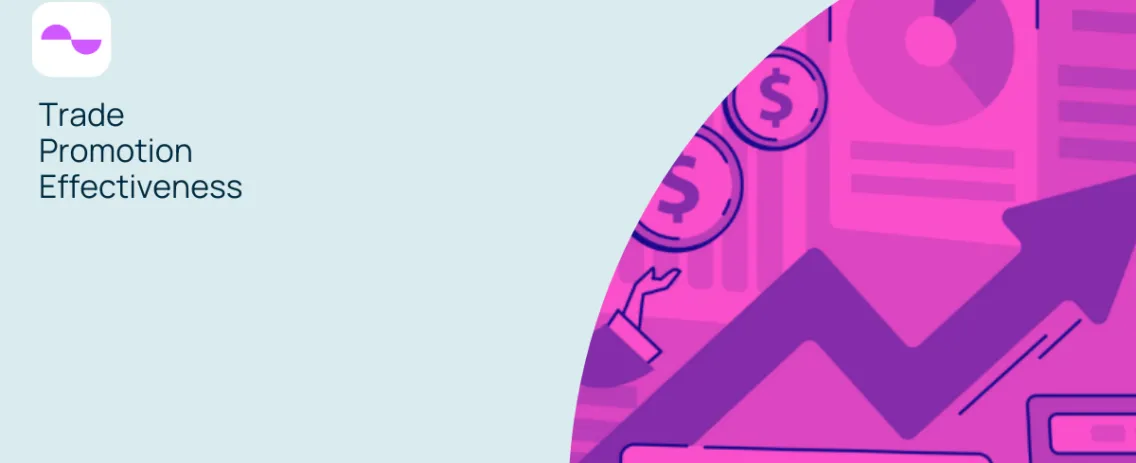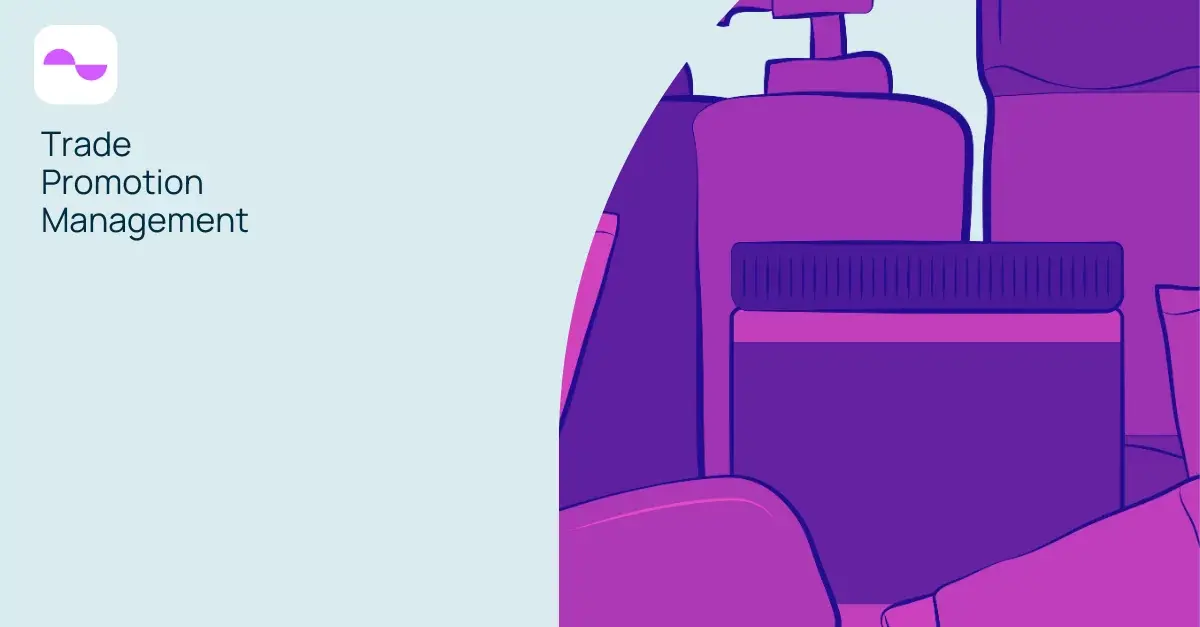
The five levers to boost trade promotion effectiveness
Measuring and managing your trade spend is one thing. Measuring your trade promotion effectiveness is another and far more complex undertaking.
True promotion management means moving beyond just tweaking whatever you think worked last year. It means the ability to pull together meaningful data, both internal and external, spanning the entire product range. Equally important is the ability to analyze that data, gaining and sharing insights.
But gaining an insight into trade promotion effectiveness and leveraging that insight for the future is even more challenging.
Put simply, trade promotion effectiveness is the extra volume and/or revenue and profits a promotion delivers. That and/or alone indicates how complex it is to measure. And that’s before we consider the range of tools a CPG can deploy as part of their trade promotion strategy. These include deals and discounts, rebates, special bundles, and more.
Account managers need to grasp what they’re spending and investing. They also need to define measurable objectives, and they must be able to measure progress and results.
After all, even a promotion that doesn’t return a profit can still serve a purpose. For example, if the objective is taking market share or establishing a new brand.
Legacy tooling, limited data resources, and largely manual processes, might have been enough to manage this in the past. But an increasingly volatile market and rapidly improving technology have changed the context dramatically.
Nevertheless, the fundamental principles underpinning trade promotion effectiveness – what we might call the key levers – remain the same. This article will discuss what they are, and how technology can enable you to exploit them far more effectively.
Enhancing the effectiveness of trade promotions
So, what are the five key levers to make your trade promotions more effective? And how exactly do they interact?
Data cleanliness and management
Trade promotions need to be planned and optimized, and they need to deliver measurable results. This means data, and data management, underpin the entire trade promotion lifecycle.
From the outset, account managers need reliable data covering previous activity. This is essential to establish a baseline, and to measure progress and results against it. Sources can include the manufacturer’s own data, from an ERP system for example, but also, potentially from other functional teams in the organization. Third-party data and syndicated data also play an important role, particularly when it comes to measuring sell-out or consumption.
Pulling this together manually would be a tortuous process, particularly if data is in multiple, incompatible formats. Data can become trapped in silos, particularly if individual teams are using bespoke tools or even spreadsheets.
But if trade promotion professionals can pull clean data from multiple sources, without manual intervention, things look very different. They can then construct more sophisticated models, free up time to analyze the outliers, evolve and test innovative approaches, and optimize their plans to become more effective.
Accurate volume planning
How can you understand how effective a promotion is, without a good idea what would have happened otherwise? This applies whether the objective is to generate profit, increase revenue, or drive up volume.
Whatever the objective is, achieving it will require the appropriate level of stock on hand, at the right time. Stockouts will lead to disappointed customers and partners and wasted opportunities. Overstocking will undermine profitability.
So, volume planning accuracy is critical, and establishing the right baseline from the start is essential. This baseline allows for a clear understanding of previous periods, which in turn generates the insight needed to develop new promotions with a focus on ROI and profitability. Without that reliable baseline, scenario planning becomes irrelevant, and measuring trade promotion effectiveness becomes impossible.

Promotion planning and optimization
Promotion planning is a highly complex task. It can span a range of multiple individual products and retail partners, over varied periods of time.
Experience is a great teacher – but it is also an expensive one. And if a big promotion misfires, a CPG might not be in a position to apply those lessons in the future.
So, when it comes to establishing ROI and trade promotion effectiveness, it makes far more sense to run “what-ifs” across multiple scenarios. That requires a solid baseline, the right forecasting tools, and of course, the right data. But it also requires a platform that allows CPG professionals to easily pull all these together, allowing them to optimize as they plan.
This doesn’t just mean that promotions teams can choose the scenario that suits them best. It means they can present internal stakeholders and retail partners with multiple tempting scenarios – finetuning them as negotiations progress.
Post-event analysis
Working towards trade promotion effectiveness needs focus, time, and the right tooling. But CPG is an incredibly fast-moving world. As the end of a promotion or quarter looms, it’s all too easy to get swept up in planning for the next burst of activity.
Neglecting post-event analysis means missing out on valuable insights into key KPIs such as lift, incremental sales, and ROI. At worst, it risks repeating ineffective strategies that could undermine the business.
However, post-event analysis can significantly enhance trade promotion effectiveness. This requires accurate, up-to-date data and tools that can compile, analyze, and quickly generate insights. These insights can then be shared, discussed, and applied to future promotion planning.
Pricing optimization
Pricing is, of course, central to consumer-packaged goods strategies. But economic volatility and the cost-of-living crisis mean price decisions have become ever more fraught in recent years.
When setting the optimal price for a product or promotion, account teams must balance different interests: the demands of senior management and finance, the needs of their retail partners, and the real-world experience and desires of consumers.
Being able to optimize pricing and model its interplay with trade promotion activities is an important lever. It can smooth the path for mutually beneficial negotiations about prices. This is achieved through data, analytics, and the ability to compare multiple scenarios or ‘what-ifs.’
Two additional requirements for trade promotion effectiveness
Each of these levers is fundamental to improving trade promotion effectiveness. But there are two additional factors – levers in their own right – that influence them all.
Automation ties them all together. It ensures that the required data is integrated from multiple systems, smoothly and in a timely manner. Automation also means that events, insights, results, and KPIs, can be shared, so that all teams work with a single, accurate, up-to-date view of the truth.
Likewise, integrated analytics are crucial to ensuring that the data yields accurate forecasts and insights. This can make all the difference as professionals consider multiple scenarios and optimize their plans in flight. This can’t be a one-off exercise. The world is moving too quickly for that.

Towards an integrated approach to trade promotion effectiveness
It’s clear that manipulating each of these levers improves trade promotion effectiveness. Using all of them together takes CPG professionals’ planning and optimization to the next level.
To do this effectively and repeatedly in a volatile market, a comprehensive software suite is needed. This platform must encompass all these disciplines and smoothly ingest and integrate all relevant data sources, both internal and external. This ensures every employee works with the same, up-to-date information.
The platform also needs sophisticated analytics to reliably calculate baselines. This paves the way for analyzing ROI and other key metrics, and for planning and optimizing multiple scenarios.
“Despite vendor claims, the major systems for customer relationship management (CRM) and enterprise resource planning (ERP) do not have the analytical horsepower necessary to deliver advanced capabilities.” — Strategy& (PWC), Boosting the bottom line: Through improved trade promotion effectiveness
Visualfabriq’s platform features cutting-edge AI to produce accurate trade promotion forecasts. It also offers a high level of automation, allowing CPG professionals to fully utilize all five levers when planning, optimizing, running, and analyzing promotions.
This high degree of integration and built-in intelligence makes the end-to-end process easier to manage, achieving short-term gains and targets. It also enables team members and senior managers to adopt a more optimized, holistic approach in steering the company. Investments become smarter and more optimized, leading to sustained, predictable growth that benefits the company, its partners, and customers.
Takeaways
There are five key levers CPG professionals can use to maximize trade promotion effectiveness. But doing so effectively and repeatedly requires effective automation and cutting-edge analytics capabilities.
Visualfabriq’s trade promotion software allows CPG professionals to pull together the required data, analyze it, and use it to plan and optimize trade promotions. that will deliver on their objectives. This ensures that objectives are met effectively and repeatedly.
This approach shifts the focus from short-term thinking with limited objectives to more holistic programs. These programs reduce toil and benefit manufacturers, retailers, and consumers.
Additionally, it allows other stakeholders to build on this foundation, helping the entire organization move towards a more sustainable approach to long-term growth. To see how this would look work for your company, simply get in touch to arrange a demo.

.png)

.png)